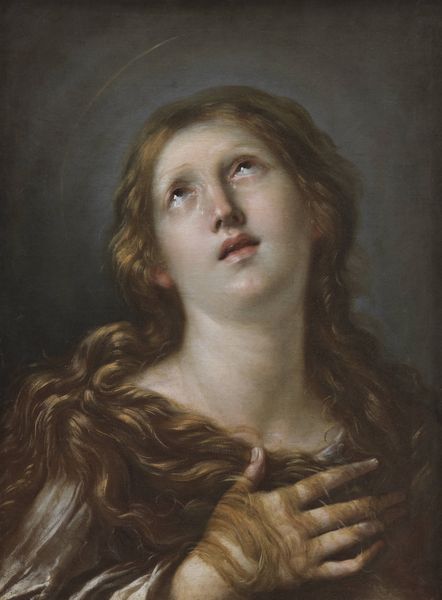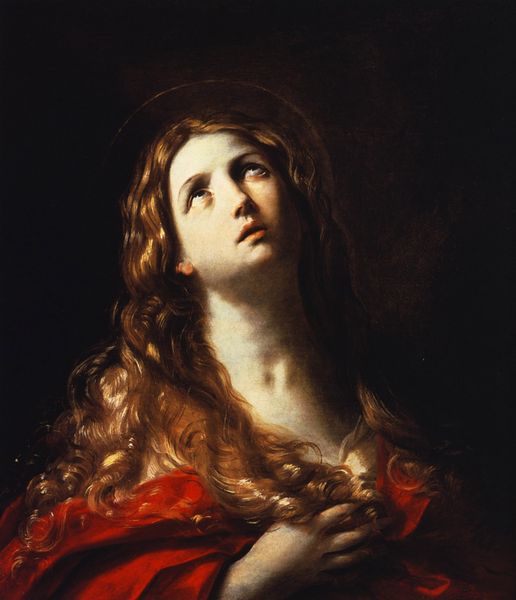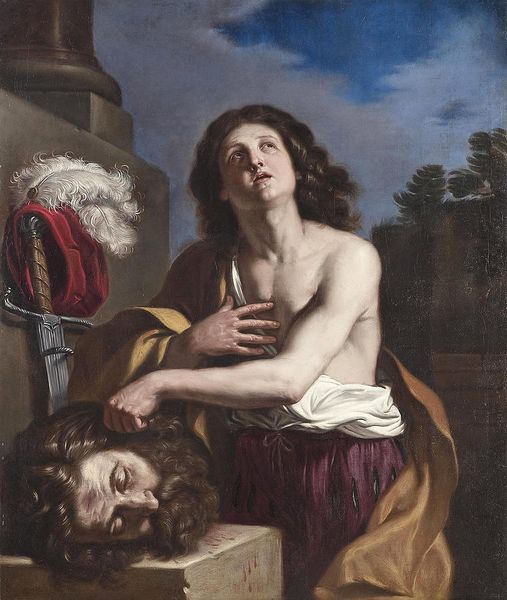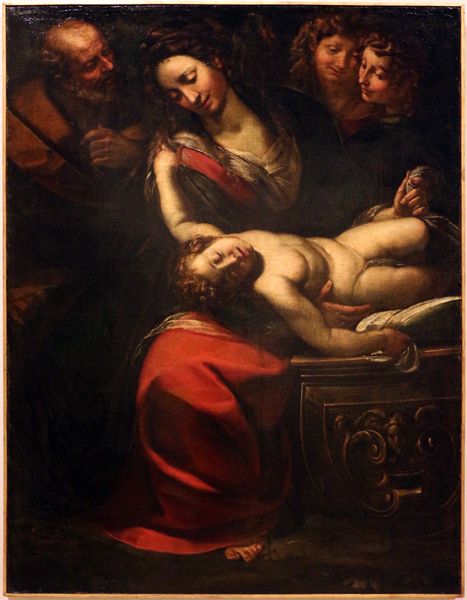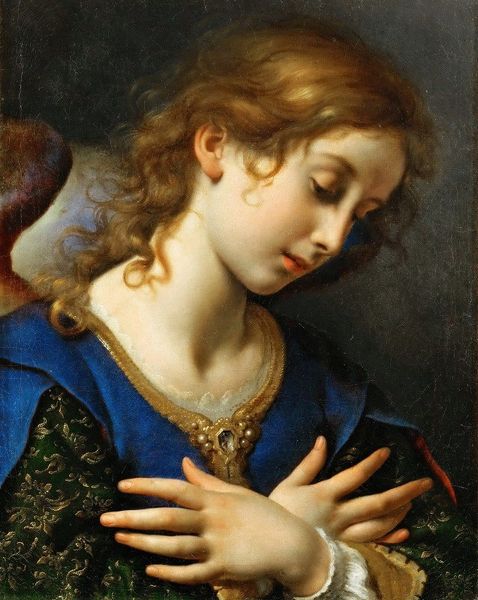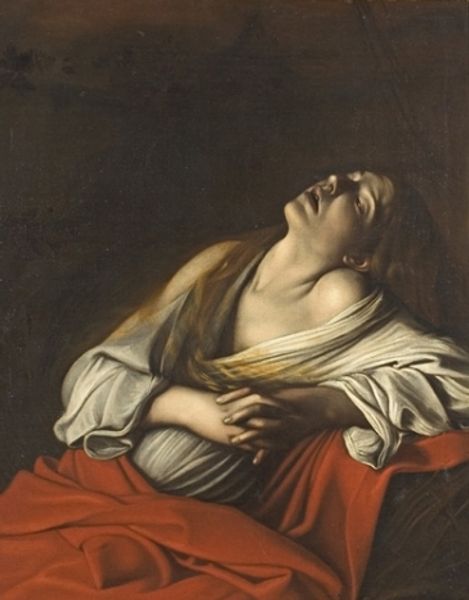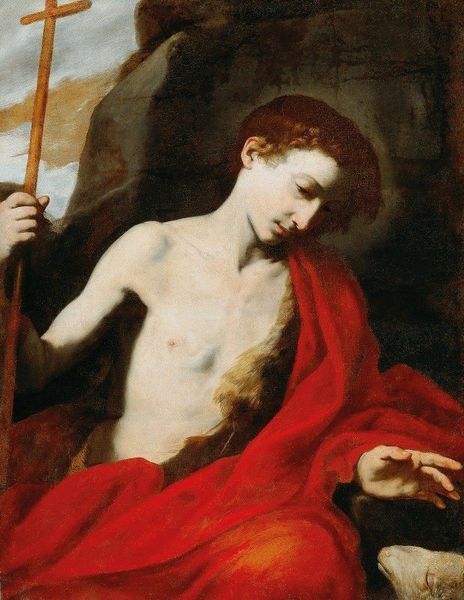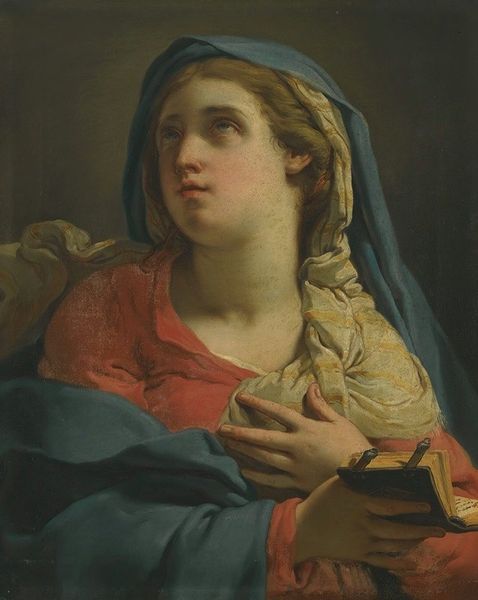
painting, oil-paint
#
portrait
#
allegory
#
baroque
#
painting
#
oil-paint
#
momento-mori
#
chiaroscuro
#
history-painting
#
italian-renaissance
Copyright: Public Domain: Artvee
Carlo Dolci painted ‘The Penitent Mary Magdalene’ in seventeenth-century Italy, during the Baroque period. The painting depicts Mary Magdalene, a biblical figure, in a state of remorse, and invites us to reflect on themes of sin, repentance, and redemption within the rigid social environment of Counter-Reformation Italy. The visual codes in the image encourage a specific interpretation. The skull symbolizes mortality, while Mary’s gaze upwards and the halo above her head indicate her spiritual transformation. Dolci's decision to portray Magdalene as beautiful, even in her sorrow, speaks to the social and religious conventions of his time, where female figures were often idealized, even when representing complex spiritual states. Historians analyze the cultural meanings embedded in such works by examining religious texts, social histories, and the biographies of both the artist and the patrons who commissioned such pieces. This helps us understand how art serves as a mirror to, and a shaper of, social values. The meaning of such images is contingent on their cultural and institutional context, but remains a potent symbol of repentance.
Comments
No comments
Be the first to comment and join the conversation on the ultimate creative platform.
